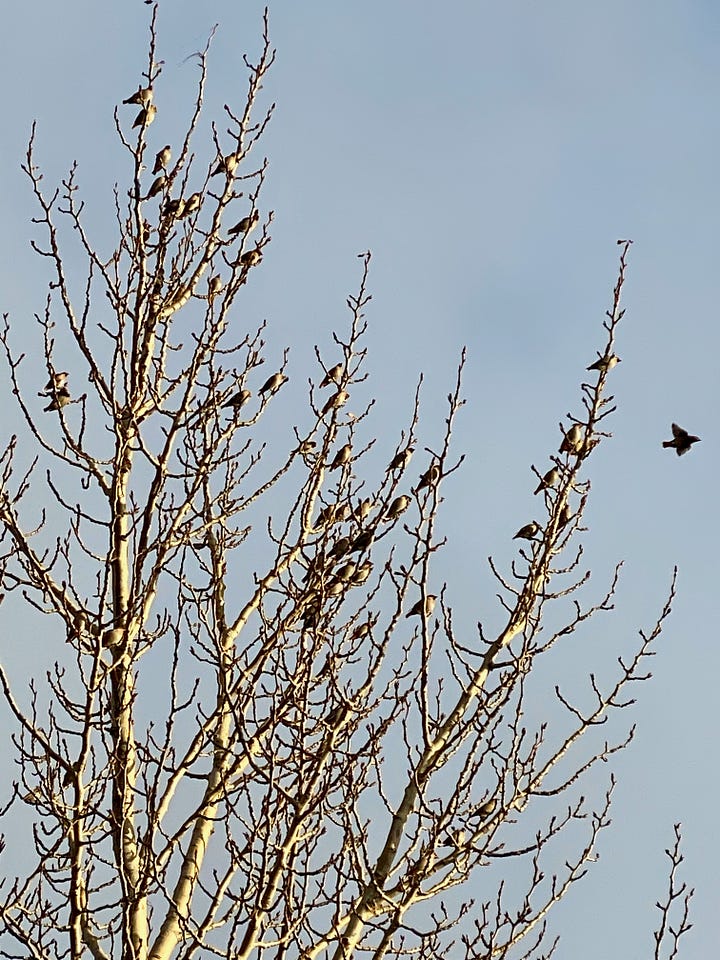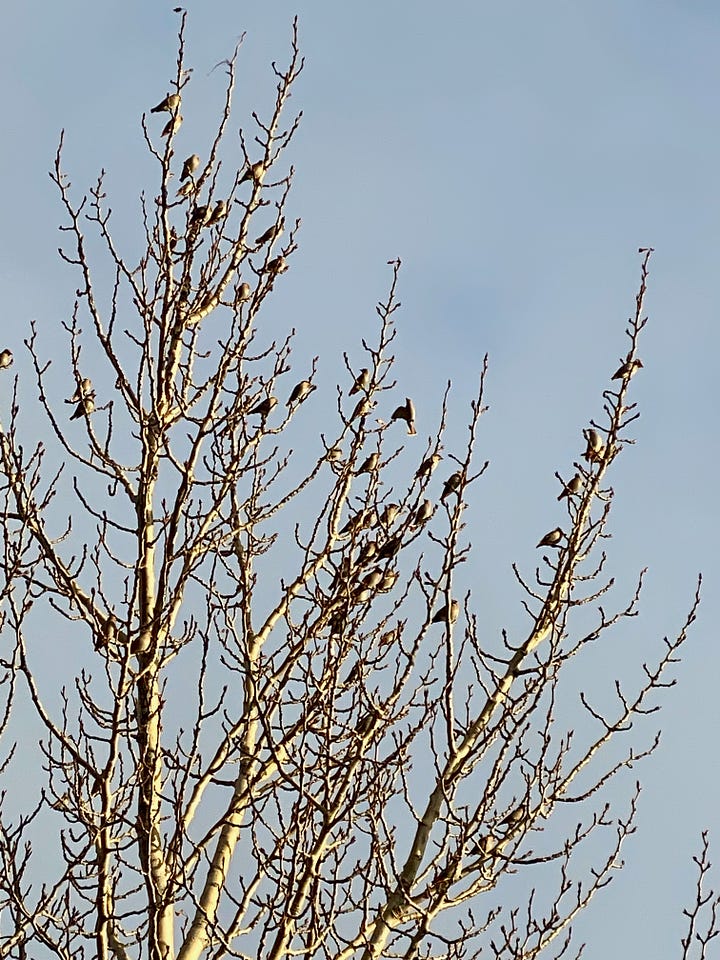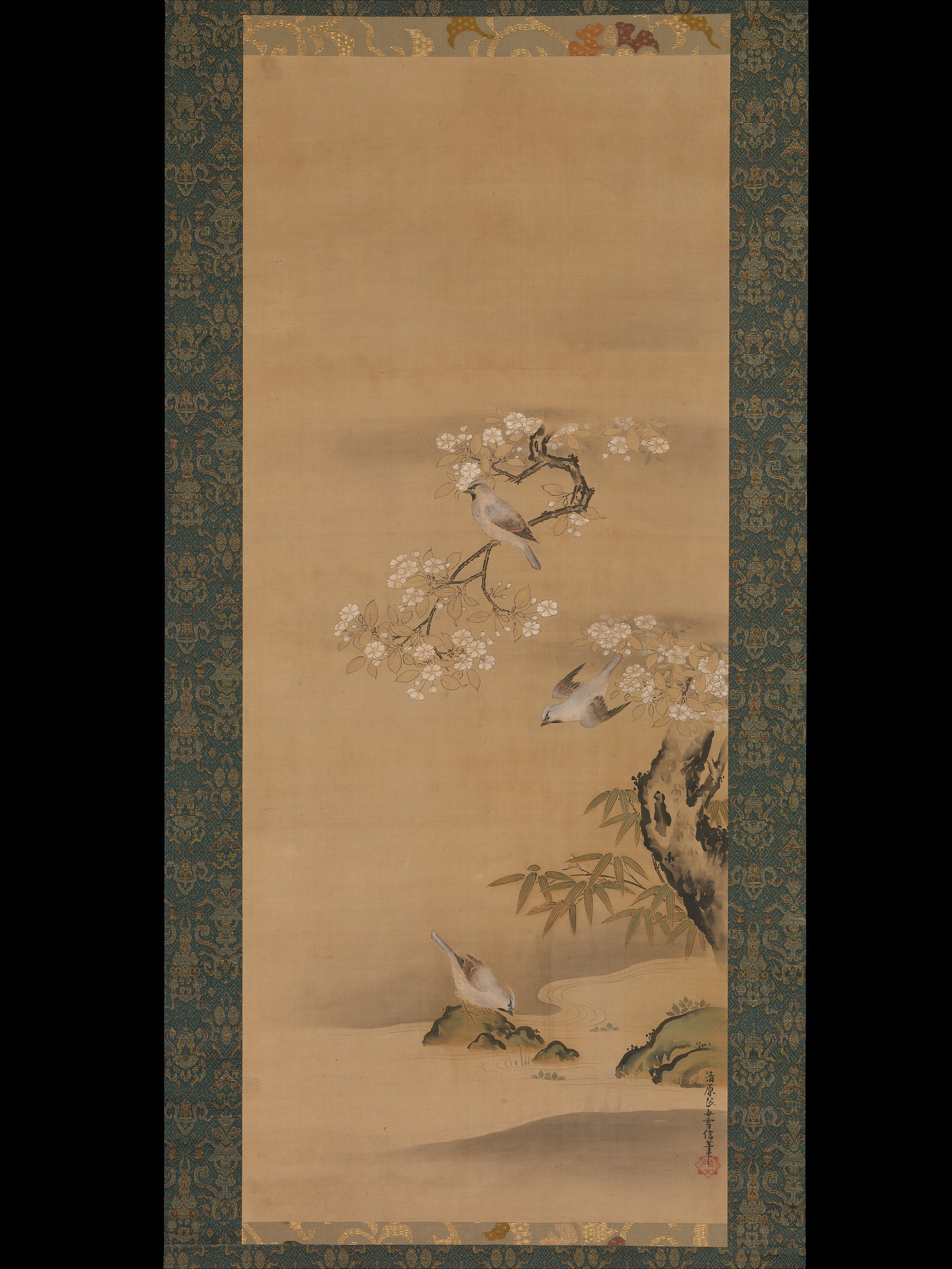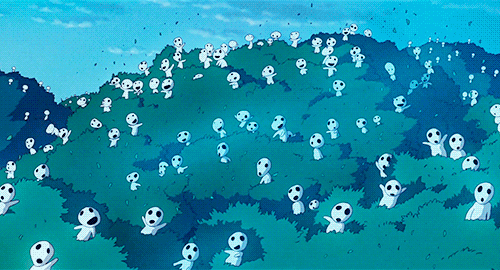Hello friends—I’m sharing a favorite post from the archive this week, as I work on a few more things this week and next.
Waxwings have arrived in flocks of late, alighting high in a single birch, facing towards the sun, trilling their soft calls in a chorus that sounds like a wave of crickets has spontaneously erupted into song. I love how mysterious they are. They appear as if from nowhere and leave just as suddenly, backlit against the pale late winter sky, never knowing when or if they’ll return. Each time they arrive I stop to watch and listen. After all, a flock of waxwings is also known as an “ear-full.”


Earlier this winter they had arrived in a late afternoon sunset, and sang as if they were paying homage to the setting sun. And today they again looked as if they were singing to something—all faced in the same direction, determinedly trilling, perched together. They remind me of the small tree spirit Kodama from Miyazaki’s beautiful film Princess Mononoke, who wave in the wind excitedly as the forest spirit walks at night.
In Japan, kodama are believed to take up residence in a tree when it reaches 100 years of age. Our birch tree is an old one—although birches are shorter-lived than most tree species, rarely living past 140 years. I’m not sure how old the birch we live with is, but the waxwings feel like tree spirits made visible for short intervals, their soft trilling a reminder of what is around us, even if we don’t always see it. The world speaking to us, with us.
David Abram, in The Spell of the Sensuous, writes of this:
Walking in the forest, we peer into its green and shadowed depths, listening to the silence of the leaves, tasting the cool and fragrant air. Yet such is the transitivity of perception, the reversibility of the flesh, that we may suddenly feel that the trees are looking at us—we feel ourselves exposed, watched, observed from all sides. If we dwell in this forest for many months, or years, then our experience may shift yet again—we may come to feel that we are a part of this forest, consanguineous with it, and that our experience of the forest is nothing other than the forest experiencing itself.1
That was how I felt as I watched the waxwings arrive and depart in the branches of the birch—a part of the same world experiencing itself.
Waxwings are called so because of the red tips on their wings—as if they were dipped in sealing wax. Wax, the etymology of which means “made from bees.” Small wings dipped in wax made by bodies with other wings. I wonder what messages the birds hold safe within their bright seals.
For thousands of years, until the 16th century, it was believed that waxwings could glow in the dark. Pliny wrote that a waxwing’s feathers “shine like flames” in the forests of central Europe. The Latin geographer Solinus also recorded that waxwings gave off a warm glow, and that the Germans would use waxwings as lanterns to light their way as they traveled at night. This was later proved wrong after a sixteenth-century scholar decided to keep a waxwing for three months to determine the matter once and for all, recording finally that he never once saw any glow from their wings.
I love the idea of the waxwings lighting a way out of the dark. Because this world feels so dark. We may know that waxwings cannot become lanterns, but I would happily believe so if it meant we could move in a world that paid more attention to the trilling of an earful of waxwings among the branches of an aged birch, rather than all the violence that world is intent on amplifying and enabling.
In her book Saving Time, Jenny Odell writes:
To look into the future is to look around; to look around is to look into history—at not the apocalypse coming but the apocalypse past, the apocalypse still unfolding. Observing that the Greek word apokalypsis meant “through the concealed,” [Elissa] Washuta writes that “apocalypse has very little to do with the end of the world and everything to do with vision that sees the hidden, that dismantles the screen.” Likewise, French feminist poet and philosopher Hélène Cixous wrote that “we need to lose the world, to lose a world, and to discover that there is more than one world and that the world isn’t what we think it is.” The current meaning of apocalypse is modern; in Middle English it simply meant “vision,” “insight,” or even “hallucination.2
The etymological root of apocalypse is “revelation, disclosure”—to uncover, reveal.3 I thought of this as I watched the birds, the trees, the sudden appearances of song and flock, wind joining in to wave through the branches. The sap beginning to wake and rise within the trunks of those same trees. What world do we turn our attention to? What world could we create if we turned our attention toward it? Odell writes earlier in the book:
Creation is not an event in the distant past, but something that is continually unfolding and needs custodians to keep co-creating it by linking the two worlds together via metaphors in cultural practice.4
What world do we see, what world can we lose, what worlds do we acknowledge—and which worlds do we co-create and link together? As I listened and watched the waxwings yesterday, that was the world I wanted to be a part of and continue to co-create. The one we are fed on our collective screens is the one I am very, very ready to refuse.

April in many northern places is known as ‘the month of birches’ or the ‘month of birch sap.’5
Spring is such a slow emergence at this latitude. It has taken years of living here to notice, become familiar with the subtleties of the spring’s turn. It’s more incremental than Trondheim, where we also once lived. Despite that Norwegian city’s higher latitude, the air from the gulf stream breathes warmth that allows first blooms to appear earlier.
Here there are no early blooms. It’s more the shifting light, the slight return of warmth to the sun, a freeze-thaw pattern that will continue for weeks—below freezing each night, hovering at or above freezing during the day. Southern exposure slowly begins to take on a different appearance from its neighboring patches of ground. Gulls return first in late April—the gravel grey of the receding snow and leaf meal reflected in the grey and white of their wings. Color only returns in late May, when leaves come out, and it's suddenly summer.
Some years we’ve tapped our birches, collected the sap, and slowly boiled it into syrup. The sap is astoundingly clear, like slightly thickened spring water, silky when it is sipped fresh. But the syrup is a commitment to time—I’ve read that it essentially feels like trying to reduce well water into syrup. But birch water was widely harvested, sipped, fermented, drunk, preserved, across northern Europe, Canada, and Alaska. It was used in porridge, bread, cheese, sodas, beer, wine, and as a healing tonic. It feels like nudging along something from a world with a much different relationship to time.
I do worry a bit about harming the trees each year we tap them—to wound and take the sap that is so actively rushing up to nourish its branches in readiness for leaf. And yet I love the idea of taking in what was once part of the tree, the same sap now in our bodies, to become part tree. To notice a sign of spring in the rising birch sap, learn what the past winter—waiting among rock, soil, and snow—tastes like as it turns into spring. Something of the past, once beneath, now rising into future.
…the visible landscape has the other moments of time “inside itself,” precisely in that the past preserves itself under the ground, as well as inside every entity that I perceive. The sensorial landscape, in other words, not only opens onto that distant future waiting beyond the horizon but also behind each tree, behind each stone, behind each leaf…6
Maybe it’s the possibility of both rootedness and horizon that is so appealing in that act of birch sap harvest. Maybe it is not an act of taking, but of reciprocity—of being with the trees, having faith in and awareness of the coming arrival of spring. Noticing the rootedness of the trees, co-creating metaphors, a custodial act of linking two worlds together.
The birch sap is a taste of spring and winter, of roots that extend far underground to reach branches that can hold a whispering chorus of waxwings—their sealed messages of worlds that are not obsessed with violence, cruelty, and power. The world I want to converse with is one where we know of leaf, root, and wing.
So I’ve decided to write poems for the birches we tap, bury them as secrets beneath the soil near the trees’ roots. Make an offering to the tree spirit, as it is done in Japan. Pay attention to earfuls of waxwings, shifts in the wind. Be stubborn in the refusal of a world that would only have us believe in ourselves. I’ll collect the birch sap, taste its embodied past, and store it for the needs of that future.
Abram, David. 2017. The Spell of the Sensuous. Vintage Books. p. 68
Odell, Jenny. 2023. Saving Time: Discovering a Life Beyond the Clock. Random House. p. 187
The modern sense of cataclysm, end of the world is from c. 1864
Ibid. p. 152
Svanberg, Ingvar et al. “Uses of tree saps in northern and eastern parts of Europe.” Acta Soc Bot Pol. 81(4):343–35
Abram, David. 2017. The Spell of the Sensuous. Vintage Books. p. 215










"What world could we create if we turned our attention toward it? ... What world do we see, what world can we lose, what worlds do we acknowledge—and which worlds do we co-create and link together?"
yesssss yes!! I asked almost exactly these same questions in a recent piece on apocalypse as well--it seems so many of us are visiting this idea of the reveal, and co-creation of new worlds and I'm here for it!
This essay truly depicts both the simplicity and genius of your mind Freya - all the connections you make flow like river through your narrative. Needless to say my favourite bit was the comparison of waxwings to kodamas 💜